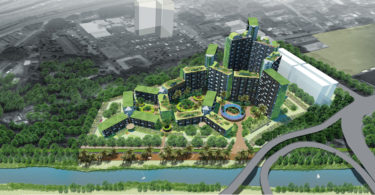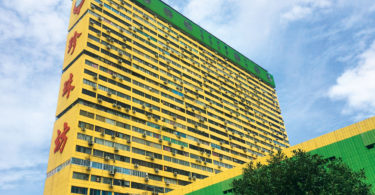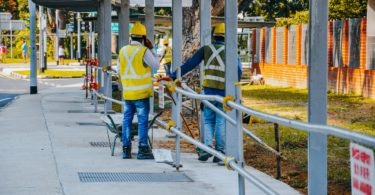Implementing sustainable methods in Malaysia’s building sector has always been a challenge whereby developers, owners and tenants are constantly seeking win-win solutions to benefit both the environment and the industry. In this section, Dr Zalina Shari (ZS), senior lecturer at the Faculty of Design and Architecture, Universiti Putra Malaysia, shares her perception on how to close the gaps between sustainable building and affordable living with indigenous Green architecture that is rich in local character, cultural identity and climate sensibility.

Malaysia has experienced rapid urbanisation within the past 30 years. Are there effective planning policies to control urban sprawl in the country?
ZS: Sprawl is the result of the migration of urban populations from major city centres to urban fringe areas due to changing lifestyles, which emphasised on spacious, more affordable and comfortable living environment. For the past 30 years, intense urban sprawl has occurred in the metropolitan areas of Kuala Lumpur, Penang and Johor. Agricultural and forest lands have been converted to suburban development patterns at an alarming rate, extending our city centre boundaries further. Many of these developments are of low density, requiring cars to move between zones. This trend has contributed to increased ecological, social and economic consequences.
However, the government has shown commitment towards sustainable growth. For example, the government has developed and implemented the National Physical Plan (NPP) and National Urbanisation Policy (NUP) to control urban sprawl, as well as the National Housing Policy to encourage urban renewal and redevelopment. Other related policies that generally promote sustainable development and Green growth are the National Policy on Climate Change, Road Map for Reduction of Greenhouse Gas (GHG) Emissions and National Green Technology Policy. There are also planning guidelines to control activities in land development. For example, the guideline on Environmental Sensitive Areas (ESA) was developed to assist in deciding the type of use and activities that can be allowed in areas designated as ESA and the minimum planning standards that must be applied for each use. The Green Neighbourhood Planning Guideline is about achieving low carbon societies and improving the standard and quality of life. I must also mention that Malaysia has a couple of rating systems for city and town scales, such as the Low Carbon Cities Framework and Assessment System (LCCF) that was developed by the government, and the Green Building Index (GBI) for Township that was developed by the industry.
Though these policies and guidelines are well and good, what gets translated on the ground is still replete with gaps. There are still environmental problems in Malaysia and we need to close these gaps. Unless the public is willing to align their attitudes with the requirements of sustainability, no legislation or conservation programme—however well designed—will be successful or have the desired impact.

What are some of the notable efforts in encouraging smart growth and urban greening in Malaysia?
ZS: Smart growth is the answer to the problem of urban sprawl. Rather than extending towns and cities by encouraging new houses and commercial buildings outside the city centre boundaries or sprawling onto prime agricultural or forest areas, smart growth is aimed at encouraging wiser infrastructure investments, protecting open space and widening reinvestment opportunities in central cities or existing communities. I foresee that the trend of continuing urban sprawl in Kuala Lumpur is likely to slow down in the near future as we have many mega mixed development projects launched in the city centre. These include the redevelopment of Pudu Jail into Bukit Bintang City Centre (BBCC) and Sungai Besi old airport into Bandar Malaysia, as well as the development of KL Sentral, Tun Razak Exchange (TRX) and KL Eco City. BBCC and Bandar Malaysia are two good examples of infill developments (also known as urban renewal and redevelopment) to contain urban growth within central areas and counterbalance sprawl by redeveloping dilapidated areas into high-density mixed developments.
All the projects I mentioned earlier are indications of the need for our city to grow vertically to create economies of scale in terms of space consumption and the need to minimise vehicular movement. These compact, inclusive, transit-oriented, mixed developments augur well with the desire for Kuala Lumpur to be among the top 20 world-class cities in economic competitiveness and quality of life. They were designed to promote liveability, reduce journey times and create lively, sustainable neighbourhoods by incorporating smart growth principles in their planning and design.
The relative compactness of these developments is important because how close buildings are to one another impacts how far people have to travel between destinations. When densities are low, driving is the most effective mode of transportation. When buildings are closer together, the development promotes walking and cycling. Higher concentration of people also makes public transit economically feasible, whereas low-density areas cannot afford or support such infrastructure. For example, Bandar Malaysia will provide Green infrastructure, housing diversity, affordable sustainable housing, commercial and lifestyle facilities with open spaces and urban greenery to restore and enhance the ecological value of the site. There will be a variety of transportation choices and facilities, which reduces car dependency. All these provisions aim to improve the overall environmental quality and quality of life for the community. TRX has received the highest GBI Platinum rating for township and Bandar Malaysia is expected to achieve the same benchmark.
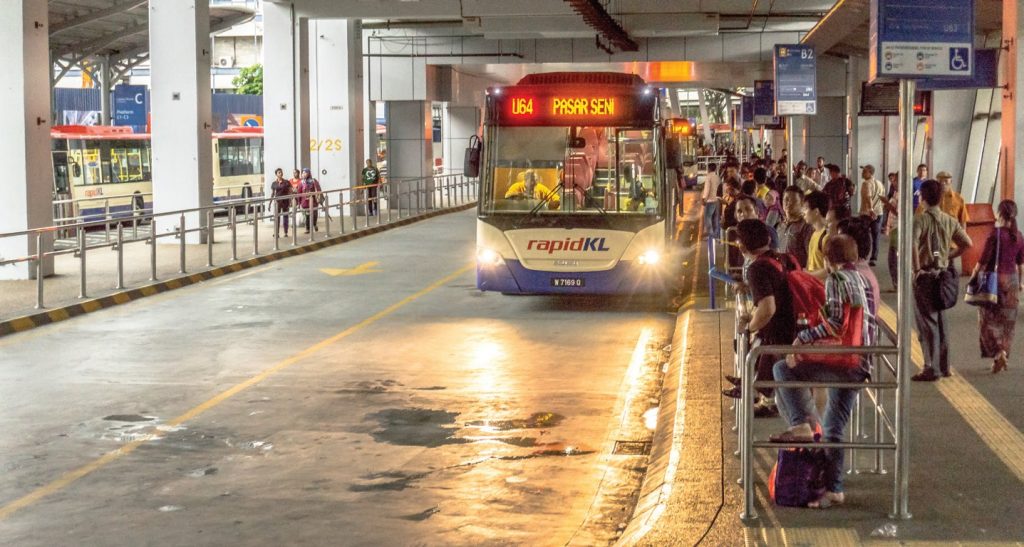
Given the hot-humid climate in Malaysia, how important is it that designs take that into account?
ZS: It is crucial because those who produce climatically insensitive designs or blindly copy Western designs are the promoters of ill-suited urban design, wasteful energy use and environmental destruction. In hot-humid climates, we often experience consistent, year-round warm temperatures instead of extreme heat like in the Middle East. The mean annual temperature stays between 24 and 30 degrees Celsius, and is cooled with frequent afternoon showers. This low indoor-outdoor temperature differential makes insulating the building shell limited in energy-saving efficiency. However, shading becomes an effective strategy in this climate zone because it reduces solar heat gain. This explains why most traditional tropical houses in our country often have massive roofs and deep sunshades. They may even have no walls but never without roofs. The true aesthetics of our climatically appropriate architecture is portrayed by the vocabularies of moderate openings, generous shading from sun and rain, balconies and ample ventilation. As such, our architectural style should be categorised by ‘airy modesty and rhythmic shadows’ or ‘porous, wind-channelling architecture’. When we design Green architecture that is sensitive to climate, ecology and energy efficiency, our buildings will naturally convey indigenous character.
Unfortunately, designers who have lost their ability to utilise natural ventilation and lighting due to the popularisation of air-conditioning and glass technology have abandoned the longstanding architectural patterns of ‘shading in the south’. Contemporary buildings often become glazed messengers of a dubious trend and out-of-context duplicates of the sleek, shadowless façades of cold climate architecture. The residential market has been hijacked by curtain wall towers, which create uncomfortable, poorly ventilated and energy-guzzling living environments. The consequences are expressionless cities dominated by gleaming, see-through glass buildings and a global energy crisis. Glass buildings are not suitable for tropical climates because the shading property of glass will never outperform that of opaque exterior shading or exterior walls. Although there are radical advances in glass technology recently—low-E glass with high shading reduces cooling load—the intrinsic weakness of large-area glazing in terms of energy efficiency still makes it less effective than an insulated solid wall. Modern mechanical equipment has provided unlimited possibilities for environmental control, but has also stripped our buildings of any indigenous character and their ability to adapt to our climate. An important part of critical reflection is asking ourselves: As a responsible designer, should we continue embracing the existing practice of blindly copying Western designs or start catalysing a Green architecture culture that is rich in local character, cultural identity and climate sensibility?
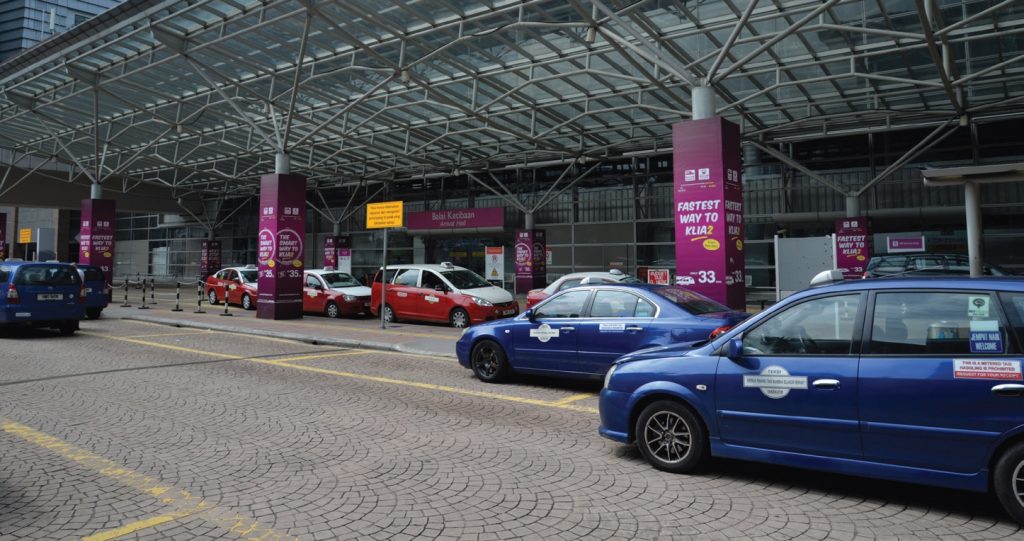
Given global warming and increasing energy consumption, how are energy sustainability practised and energy efficiency improved in the different sectors in Malaysia?
ZS: In the energy sector, the development of renewable energy (RE) in our country was rather slow. It was introduced in the Five Fuel Policy way back in 2000 with a target of 5 percent of RE in the energy mix by 2005, but only 0.3 percent was achieved. The National Green Technology Policy was introduced in 2009 under the 9th Malaysia Plan (9MP) (2006–2010) and the National Renewable Energy Policy and Action Plan (NREPAP) was launched in 2010. Subsequently, the Feed-in Tariff (FiT) mechanism started to be implemented for biogas, biomass, mini hydro, solar PV and geothermal. The government has taken continuous effort in the development of RE through various support and promotion programmes, such as the Small Renewable Energy Power (SREP) Programme and Malaysia Building Integrated Photovoltaic Technology Application Project (MBIPV). These efforts have provided a good platform for the growth of RE in Malaysia. In a bid to transform our energy sector, the government is targeting to achieve 11 percent of RE in the energy mix by 2020 and 17 percent by 2030.
Malaysia’s building sector consumed only 19 percent of the final energy compared to the industry and transportation sectors, which consumed 30 percent and 40 percent respectively. But the building sector—both residential and commercial buildings—consumes well over half of the total electricity generated. That is why the building energy efficiency programme has formed a major and important part of our national energy efficiency framework. Once we reduce electricity demand in buildings, we promote the saving of primary energy and ensure security in the national energy supply. In order to encourage energy efficiency in the building and industry sectors, many national initiatives have been implemented, such as the Malaysian Industrial Energy Efficiency Improvement Project (MIEEIP), Building Energy Efficiency Programme (BEEP), fiscal incentives for energy efficiency, development of Malaysian Standard MS1525, energy audit and retrofit in government buildings, development of energy-efficient guidelines for Malaysian Industries, Green Building Index (GBI) and Minimum Energy Performance Standards (MEPS). As a result, the energy efficiency sub-sector contributed RM1.5 billion to GDP in 2013 and electricity usage in government buildings reduced by 6.1 percent in 2014 compared to 2013. As of August 2016, there are 364 GBI-certified buildings. This figure does not include projects assessed or certified by other local rating tools, such as GreenRE; Penarafan Hijau JKR; Melaka Green Seal; and foreign rating tools, such as US LEED and Singapore’s Green Mark. The number of energy-efficient and Green buildings in the country will also increase once the Malaysian Carbon Reduction and Environmental Sustainability Tool (MyCREST) by the Construction Industry Development Board (CIDB) becomes mandatory for extra-large and mega government projects. In transforming our transportation sector, the Ministry of Energy, Green Technology and Water has developed the Electric Mobility Blueprint for public transport and private vehicles. Consequently, the first bus rapid transit (BRT) line in Malaysia has begun operating in 2015 using all electric buses. However, the number of hybrid cars, electric cars and bikes, as well as EV charging stations are way too small as compared to the ministry’s targets.

What kind of sustainable building strategies have been employed in Malaysia and how effective have they been?
ZS: In 2014, I assisted Greenbuildingindex Sdn Bhd in analysing more than 250 score sheets of building projects certified by the GBI rating tool from 2009 to 2013 in order to understand the Green building trend in Malaysia. For nonresidential projects, I found that many of the criteria under Sustainable Site Planning and Management and Indoor Environmental Quality (IEQ) were commonly achieved. More than 90 percent of the projects earned maximum points for site selection, building user manual, Green vehicle priority, public transportation access, construction activity pollution control, workers’ site amenities and storm water design. Whereas for IEQ, they are high-frequency ballasts, tobacco smoke control, mould prevention and electric lighting levels. On the other hand, the criteria under Materials and Resources were seldom obtained. Less than 40 percent of the projects scored criteria for sustainable timber, construction waste management, recycled content materials, materials reuse and selection, as well as refrigerants and clean agents. For residential projects, the requirements for Innovation criterion were commonly achieved, but many requirements for Water Efficiency were seldom being obtained. Overall, the least popular criteria were water recycling, sustainable timber, renewable energy (residential only), air change effectiveness (non-residential only) and brownfield development. This means that less than 30 percent of the projects managed to obtain at least the minimum point(s) offered by these criteria. These strategies can be considered as too expensive, too difficult or too risky.

What are the existing barriers in the promotion of sustainable building practices in Malaysia and what measures can be implemented to overcome them?
ZS: I was asking this question during my doctoral research conducted in 2009 and findings from more recent research also tell the same thing. The major challenge in implementing sustainability methods in our building sector is to achieve win-win outcomes in order to attain mutual benefits for the environment and the industry’s economic cost benefits. There is a perception that Green buildings cost more, so consideration of Green features is dismissed out of hand, despite clear evidence that many Green features are cost-effective, with short paybacks. This explains why there is a lack of interest among clients, owners, tenants and occupiers for sustainable buildings, especially among local companies for class B and C premises and buyers of residential properties. Their main interest is to reduce the cost of development or the rent per square metre. There are still many developers and builders in the country who react negatively to building environmental rating tools because compliance means additional cost. This results in buildings being designed without addressing the needs of occupiers, such as comfort issues that link to productivity. Owner-occupiers should now be moving to life cycle costing and this will create good drivers for energy efficiency. The prevalent mindset should instead focus on accumulative savings over a number of years rather than immediate financial impacts.
Developers must be convinced that solving sustainability issues will add value to the development and the public should be prepared to pay a higher entry cost to enjoy such benefits. Unfortunately, the industry still lacks understanding about sustainable building and construction. As such, MGBC has been actively promoting the concept, strategies and technologies of sustainable building and construction among our members and non-members via training sessions, talks, seminars and conferences. On top of that, MGBC Research Committee is now trying to prove that sustainable buildings make clear business sense—it is not just about saving the planet—by documenting our corporate members’ success stories. We would like to attach a financial value to the benefits of Green buildings and this is crucial information for the real estate lenders and investment community. We hope that this study will help to encourage more demand for sustainable buildings. Regular sharing of best practices for Green building needs to continue. The government should continue providing incentives—in terms of tax treatment and regulation—to developers and owners who spend extra money to promote sustainability in their projects with Green ratings.

What is the outlook for the Malaysian construction industry in the next few years?
ZS: The prospects for Malaysia’s construction industry remain robust and promising as the government launches initiatives to spur industry growth. There are plenty of high-value projects already in the pipeline, with affordable housing and highways being constructed, as well as the Light Rail Transit 3 project. In September 2015, the government issued a five-year blueprint called the Construction Industry Transformation Programme (CITP) to overhaul the nation’s construction sector by 2020. CITP outlines measures to improve the sector in a range of areas, including safety and professionalism, quality, environmental sustainability, as well as productivity and internationalisation. By 2018, all government projects will be made mandatory to assess their construction quality using Quality Assessment System in Construction (QLASSIC). In a bid to reduce accidents and injuries at construction sites, stricter regulations will be introduced. In order to boost productivity and reduce the industry’s reliance on low-skilled foreign workers, we will see more programmes being conducted to boost local talents and an increased uptake of building information modelling (BIM) and industrialised building systems (IBS) in the next few years to promote an effective, efficient, socially responsible and sustainable construction industry. The increasing initiatives of the government in the field of Green development will also provide a strong impetus to the growth of Green architecture in the country in the future. Consequently, the focus of Green building construction will be shifting from new building design and construction to greening existing buildings.
What do you think of the emerging crop of students as future architects and designers?
ZS: I assume our architecture students now are more ecologically literate and environmentally aware compared to those who graduated 10 years ago. A number of architecture schools in Malaysia—such as USM, UPM, UM, UTM, UiTM and IIUM—have included sustainability as an inherent part of their revamped curricula, as claimed in their philosophies. The growing number of environmental and sustainable design experts and research activities are also signs of the schools’ future inclination towards sustainability education. In many instances, I have seen a bunch of brilliant students from these universities who came up with not only energy-efficient, comfortable, adaptable building designs, but also beautiful, exciting and relevant to the contexts that make sustainable living easy, affordable and attractive.
Regardless of all the sustainability-related courses that are offered, I have also seen students who were influenced by the iconic images of works by Frank Gehry, Zaha Hadid, Santiago Calatrava, etc., rather than placing more emphasis on context, locality and pragmatic solutions to produce environmentally friendly or sustainable designs. They placed the architecture of form and beauty above one of environmental and social value. They followed Western architectural style that requires active mechanical systems for comfort, rather than opting for tropical architecture using passive cooling strategies. Both students and lecturers have to change their mindset, especially if what they define as ‘good design’ has caused so much resource depletion and environmental damage in the first place.
Do they have what it takes to design sustainably for a future faced with certain climate change consequences?
ZS: It is more probable than not that students who undertake professional degrees with accreditation from the Board of Architects Malaysia (LAM) have what it takes to design sustainably. The reason I said this is because LAM requires architectural curricula to be integrated with not only design, but also environmental, technology, and culture-related courses. However, existing efforts to address sustainability vary greatly from institution to institution and from discipline to discipline. The difference between students, in terms of their environmental thinking, depends on the institutions’ sustainable curriculum approaches. For example, architecture students will turn out to be building professionals who are more ecologically literate and environmentally aware and sensitive if their schools offer them various sustainability-related courses, and they are continuous rather than scattered in the programme. Besides, these courses are mandatory and start relatively early. The curriculum is also well-integrated and balanced between ecology, society and economy as well as between technology, theory and design. More importantly, design studios are made as the real backbone for sustainability education, since their sequence is well-organised along with different application levels of sustainability issues.
Unfortunately, not all schools with LAM accreditation offer such a perfect sustainable curriculum. We still have the scattered curriculum method, but we are moving towards developing a continuous curriculum as it seems most advantageous for a well-integrated and balanced architectural education. This takes time and commitment from each and every faculty member. As far as I am aware, Kyoto University is the champion in Asia, being the only architecture school with sustainability courses in every semester. If we are to emulate what Kyoto University is doing, our architecture schools will have to stop relying heavily upon ‘Green’ faculty members. Imagine if a ‘Green’ faculty member covers sustainability aspects in his or her studio, then the other seven or nine studios are ‘free’ to explore other topics and specialties, students may experience the attraction of sustainability in one studio, only to find it sadly missing or poorly represented in subsequent studios. The isolated character of the sustainability modules that do not find their way into the design studio process is also not effective in inculcating environmental responsibility in each student.
Disclaimer: The author’s views expressed or implied herein are first and foremost in her capacity as UPM lecturer, with insights gleaned from her association with fellow board members of MGBC, and do not constitute a formal endorsement from the council. However, the council will enthusiastically encourage and fully support her views expressed herein.

DR ZALINA SHARI
SENIOR LECTURER AT THE FACULTY OF DESIGN AND ARCHITECTURE, UNIVERSITI PUTRA MALAYSIA
Dr Zalina Shari is a senior lecturer at the Faculty of Design and Architecture, Universiti Putra Malaysia (UPM). She received her PhD in Architecture (specialising in building sustainability assessment) in 2011 from the University of Adelaide, South Australia. With this expertise, she has been teaching sustainability-related courses for the Master of Architecture programme in UPM and giving talks on sustainability issues and different Green building rating tools at various educational events and programmes. She also has experience in being a consultant for government and non-governmental agencies to share her knowledge and expertise in the topic. She is currently a member of editorial boards for a couple of international journals, as well as an author and a national correspondent for FuturArc. She has been serving as a board member of the Malaysia Green Building Confederation (MGBC) since 2014, currently co-chairing the research and media committees.





